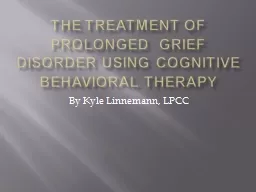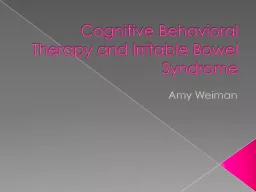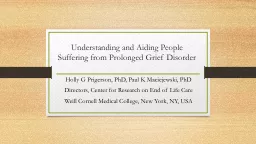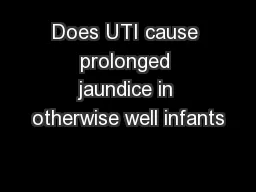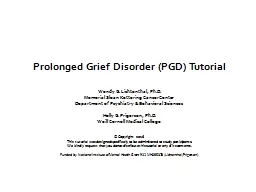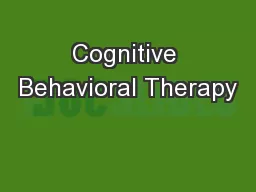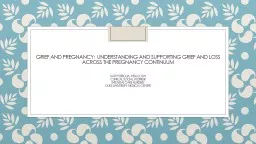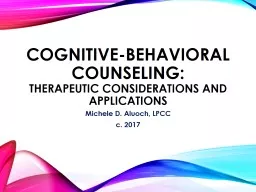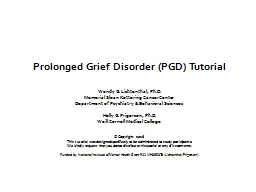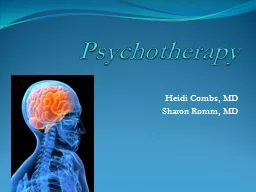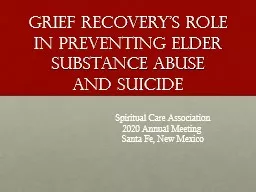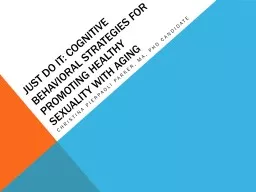PPT-The Treatment of Prolonged Grief Disorder Using Cognitive Behavioral Therapy
Author : lindy-dunigan | Published Date : 2019-03-04
By Kyle Linnemann LPCC What is Cognitive Behavioral Therapy A Brief Overview The Origin of Cognitive Behavioral Therapy The main idea upon which CBT is based can
Presentation Embed Code
Download Presentation
Download Presentation The PPT/PDF document "The Treatment of Prolonged Grief Disord..." is the property of its rightful owner. Permission is granted to download and print the materials on this website for personal, non-commercial use only, and to display it on your personal computer provided you do not modify the materials and that you retain all copyright notices contained in the materials. By downloading content from our website, you accept the terms of this agreement.
The Treatment of Prolonged Grief Disorder Using Cognitive Behavioral Therapy: Transcript
Download Rules Of Document
"The Treatment of Prolonged Grief Disorder Using Cognitive Behavioral Therapy"The content belongs to its owner. You may download and print it for personal use, without modification, and keep all copyright notices. By downloading, you agree to these terms.
Related Documents

